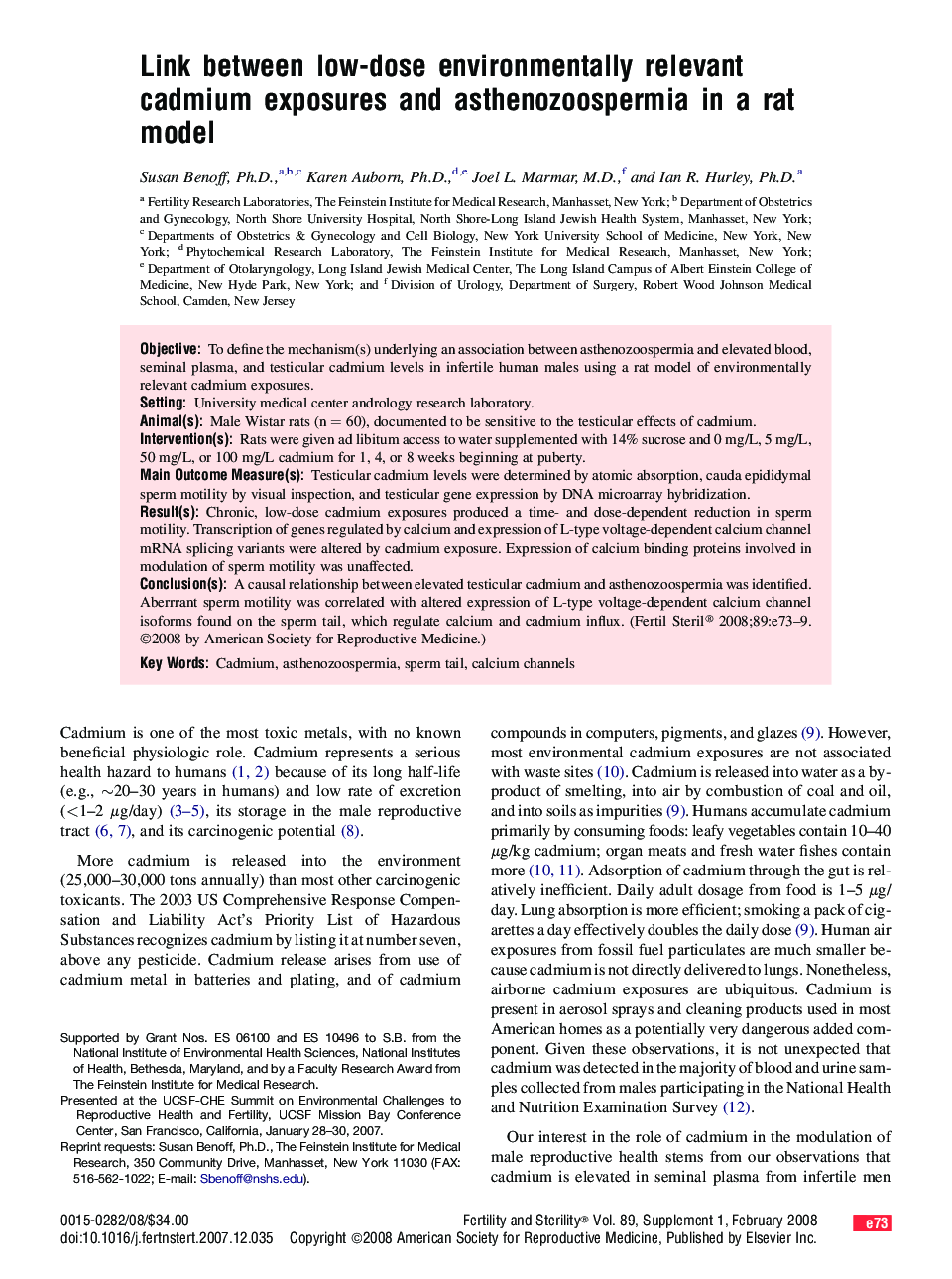| Article ID | Journal | Published Year | Pages | File Type |
|---|---|---|---|---|
| 3939638 | Fertility and Sterility | 2008 | 7 Pages |
ObjectiveTo define the mechanism(s) underlying an association between asthenozoospermia and elevated blood, seminal plasma, and testicular cadmium levels in infertile human males using a rat model of environmentally relevant cadmium exposures.SettingUniversity medical center andrology research laboratory.Animal(s)Male Wistar rats (n = 60), documented to be sensitive to the testicular effects of cadmium.Intervention(s)Rats were given ad libitum access to water supplemented with 14% sucrose and 0 mg/L, 5 mg/L, 50 mg/L, or 100 mg/L cadmium for 1, 4, or 8 weeks beginning at puberty.Main Outcome Measure(s)Testicular cadmium levels were determined by atomic absorption, cauda epididymal sperm motility by visual inspection, and testicular gene expression by DNA microarray hybridization.Result(s)Chronic, low-dose cadmium exposures produced a time- and dose-dependent reduction in sperm motility. Transcription of genes regulated by calcium and expression of L-type voltage-dependent calcium channel mRNA splicing variants were altered by cadmium exposure. Expression of calcium binding proteins involved in modulation of sperm motility was unaffected.Conclusion(s)A causal relationship between elevated testicular cadmium and asthenozoospermia was identified. Aberrrant sperm motility was correlated with altered expression of L-type voltage-dependent calcium channel isoforms found on the sperm tail, which regulate calcium and cadmium influx.
